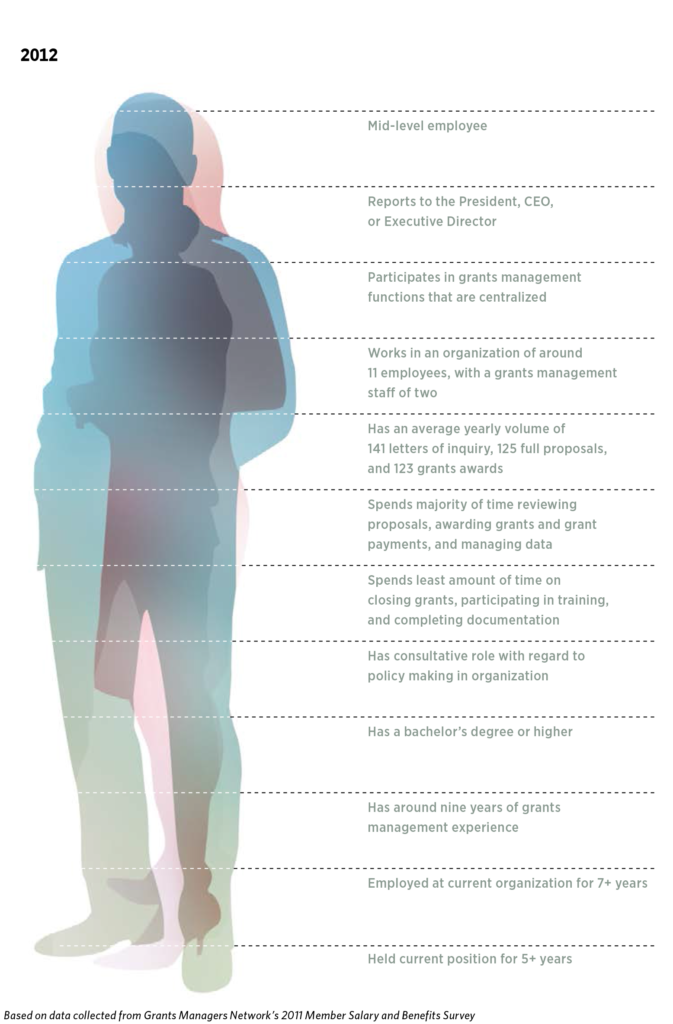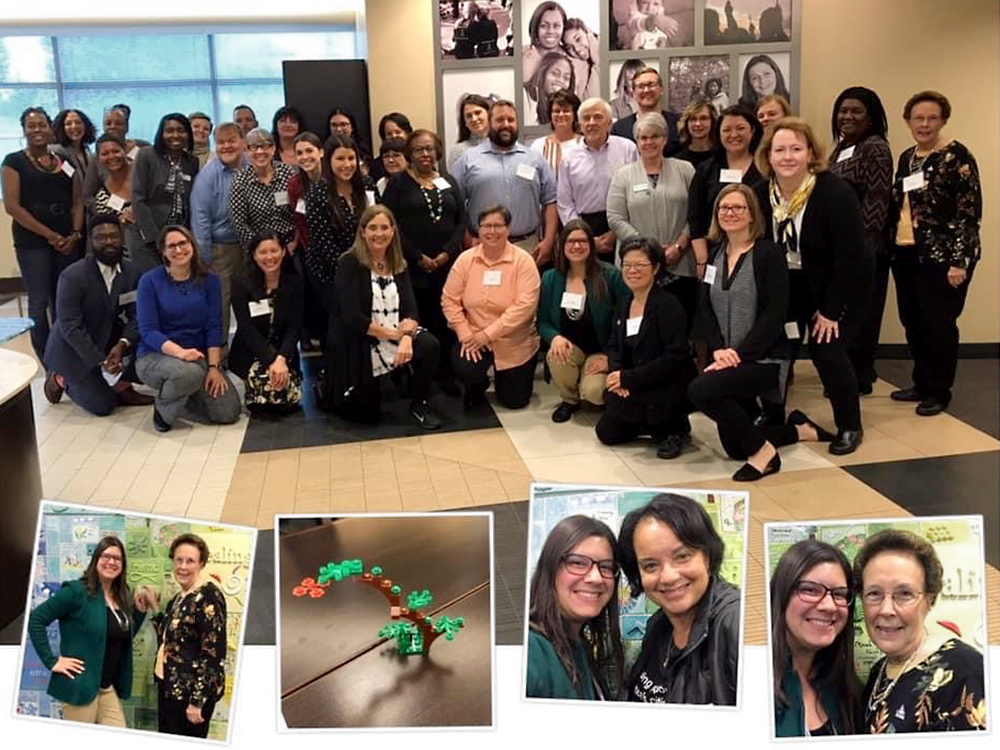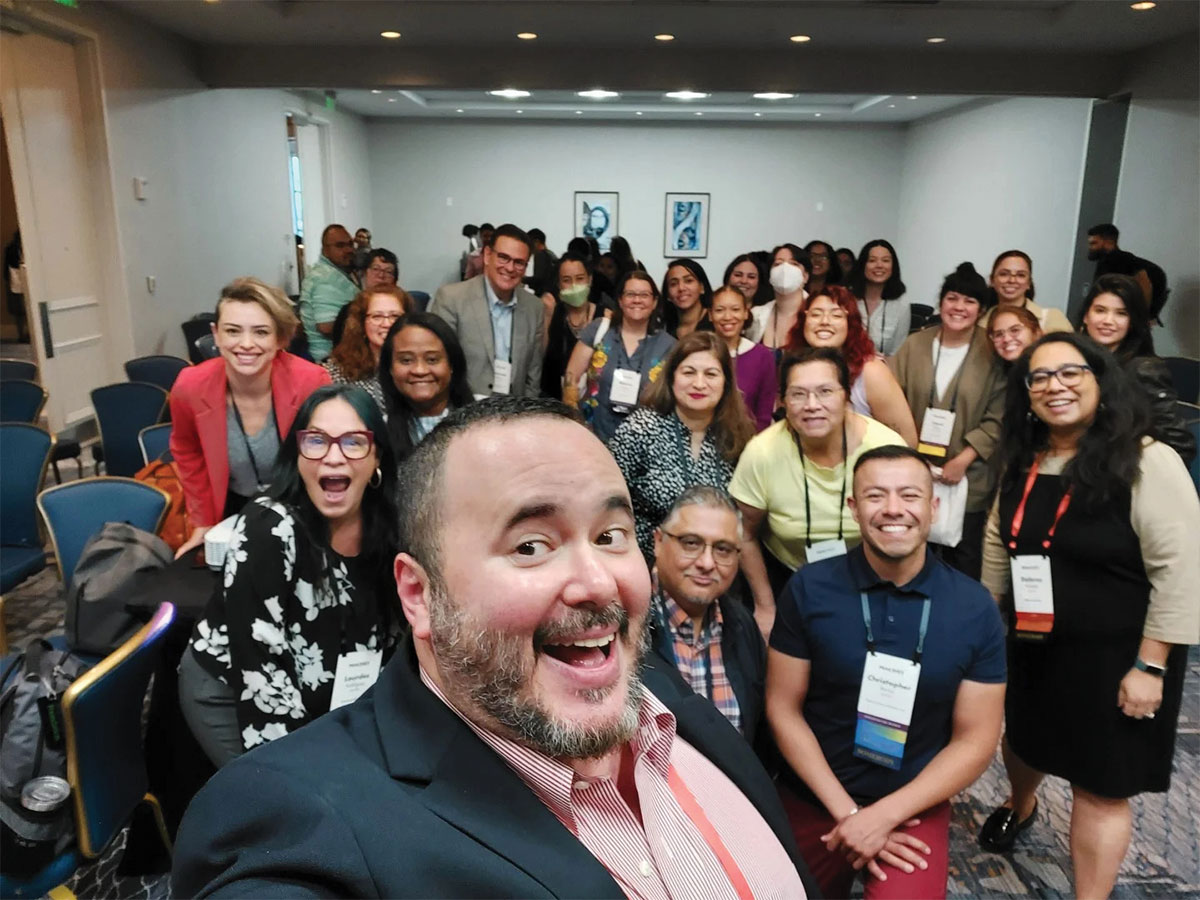Grants management takes many different shapes within different organizations, and can change over time within the same organization in response to evolving practices and procedures, administration, technology, and developments in the field of philanthropy.
This variety of process and purpose means that it is challenging to assign an all-encompassing definition of grants management. Michelle Greanias, executive director of the Grants Managers Network, summed up the role in her Spring 2009 article in the GMN Examiner, “So What Is Grants Management Anyway?”
“Grants managers are the experts on how grants are made, dealing with the policies, procedures, and operations behind receiving, awarding, and monitoring grants.”Greanias described the three main objectives of grants management:
- Remove most of the administrative work of grantmaking from program staff, freeing them to build relationships and focus on proposal review and recommendations.
- Support overall organization goals, priorities, and requirements, including compliance with laws and regulations, developing and tracking the annual grants budget, and recommending grant-related policies.
- Make the grantmaker one of the most responsive, accessible, and easiest-to-work-with in the field through clear and timely communication with grantseekers and grantees.
Within this scope, grants managers spend much of their time reviewing letters of inquiry and proposals for adherence to organizational grantmaking policies, ensuring compliance with relevant laws, awarding grants and payment, and maintaining grant records. Grants managers frequently work in close collaboration with other key players in a variety of roles: program staff, executive staff, finance and administration, legal services, and grant recipients.
Grants managers are uniquely positioned to develop a holistic view of the practice of grantmaking and are increasingly lending their skills and expertise to a broader range of areas within their organizations.
Capacity Building
Grants managers frequently work closely with grant recipients, assisting them with application and reporting processes, and guiding them through the rules and regulations. Grants staff learn a great deal about each grantee and can explore how grantees compares to one another in a variety of areas—where they’re strong, where they’re comparatively weak. The ability of grants management to see the strengths and struggles of grantees from across the entire organization adds value in a way colleagues working in specialist functions or programs may not see. Accordingly, grants managers play an important role in providing technical assistance and capacity support to their grantee organizations.
Tiffany Price, the director of assistance and advising at the Mitchell Kapor Foundation in San Francisco, does just this. The Mitchell Kapor Foundation has only five staff members, so each must wear multiple hats. In addition to being the foundation’s only grants management staffer, Price also helps the organizations that the foundation funds find ways to work more effectively. Grantees contact Ms. Price for assistance in identifying useful conferences, consultants, and technology.
Price also works to create connections that can serve as support systems for the foundation’s grantees. For example, she developed a relationship between the Mitchell Kapor Foundation and Taproot International, a group that provides service grants to other nonprofits. By supporting Taproot, Mitchell Kapor Foundation is helping to create an environment of support for grantees that extends beyond the walls of the foundation.
For Price, her dual roles—grants managementand grantee capacity supporter—complement one another. She reviews proposals not just through the eye of a grants manager, but also with a view to identifying aspects of the foundation’s application process that might be confusing or overly-burdensome to applicants. This allows Price to work with the foundation’s staff to create a more efficient process for applicants and look for opportunities for applicant organizations to receive further proposal writing support.
Reviewing proposals and reports to identify additional support opportunities is part of Price’s formal job description, but the basic tenets of working directly with grantees or offering
recommendations internally at organizations are practices that many grants managers can incorporate into their work.
Process Development
Grants management work is largely dependent on processes—proposal and payment processes, compliance review, board review, and grant agreement processes, among others. Grants managers see first-hand what processes work and which ones don’t, and how all processes work in relation to one another. For example, a new process may make preparing board materials easier, but get in the way of database management.
Grantmaking is becoming more complex without corresponding increases in staffing levels. As a result, thoughtful and comprehensive processes that work for all departments across a foundation, as well as for grantees and other constituents, are becoming ever more important.
An interesting model for a thoughtful approach to process development and implementation is in place at the National Endowment for Democracy in Washington, D.C. NED has created a Grantmaking Resource Center with three main objectives: technology development, process development, and a learning component (documentation of all policies and procedures and training staff to do their jobs with knowledge and accuracy).
Nancy Herzog, co-director of the Grantmaking Resource Center, has worked at NED for seventeen years, beginning in a support role within grants management. In positions of increasing responsibility, Herzog has developed expertise in shepherding grants through the necessary processes, organizing paperwork, maintaining direct contact with grantees, working with charities to help them understand their role as NED grantees, and helping grantees develop strength in fund stewardship. This broad range of duties required Herzog to develop her own expertise in the organization’s grants database.
NED eventually recognized that staff with explicit roles were using discrete parts of each process, but no one was overseeing how all of the roles and processes worked together. Herzog, though, was concurrently managing the day-to-day grants management functions as well as working on system and process development, and was a perfect fit to manage the Grants Resource Center they created.
The Grants Resource Center team focuses solely on building and implementing processes and technology and providing appropriate training and support around those processes. They are tasked with identifying appropriate areas for process revision, building working groups composed of staff from relevant departments, creating new processes, gathering feedback from end users, and developing rollout plans. They also create materials documenting the new processes and develop training systems to help NED staff become proficient in new processes.
While other organizations may not have a department dedicated solely to process development, this is an area where grants managers can, and should, contribute to their organizations. Grants managers frequently works across multiple departments and constituents and often have a broader perspective on how process affects grantees and program staff, as well as their own departments. This organizational view puts grants managers in the unique position of being able to provide valuable insights regarding weak points and bottlenecks in the process.
Technology
The increasing impact of technology is as evident in grants management as in most other professions. Grants managers have always been the primary users of grantmaking databases and generally are early adopters of alternative technologies. These factors enable them to take leadership roles in selecting and implementing technology solutions, as well as in considering the implications on overall workflow and the entire organization.
Heather Janbay, grants manager of donor-advised funds at American Jewish World Service, helped create the organization’s online grant application system. The grants staff participated in creating the space and resources to assist grantees in working through their initial online applications, and served a critical role in gathering feedback from grantees regarding the online application form. Grantee comments, concerns, and ideas helped steer additional system development, according to Janbay, including improvements for adapting to a wide range of technology capabilities and ensuring that the technology and the applications were as culturally sensitive and aware as possible.
Tiffany Price of the Mitchell Kapor Foundation also has combined her grantee capacity support role with her work in technology development, working with the foundation’s staff to develop a mobile website that is accessible from a variety of technology devices. In addition to applying standard technology best practices, mobile website development requires a keen understanding of vital foundation information that must translate to smaller devices and shorter content. Price is utilizing her dual role in the foundation to consider these issues and ensure that the foundation is not
sacrificing its commitment to transparency by removing too much of the information currently on their website while also creating a mobile site that accomplishes communications goals for the entire organization.
There are many exciting developments occurring in technology that can transform the way the philanthropic sector does its work. Grants managers can combine their special understanding of their organizations, grantees, and processes, and play active roles in technology planning, including decisions on not implementing certain new technologies, to enhance their work and the work of their partners.
Field Development
Grants managers are expanding their work to support and promote the profession, both within their organizations and in the philanthropy sector as a whole. As the field has grown, so have activities of grants management professionals as advocates for new uses for technology and improved practices for all participants in the grants process. Grants managers are learning about developments in the field and, at times, helping to create those developments and educating their colleagues and peers. Both Nancy Herzog and Tiffany Price have been featured speakers at the Grants Managers Network’s annual conference, and Heather Janbay presented a session on due diligence for international organizations at the International Funders Group network, housed at Philanthropy New York.
In 2005, the Grants Managers Network had 784 members; by 2010, that number had more than doubled to 1,717. This increase in membership—and greater member interest in field development—has enabled GMN to collaborate with other organizations and field leaders on developing opportunities to share with and learn from other grants managers and grantmaking institutions.
Project Streamline is one example of such collaboration. Conceived with the goal of improving grant application and reporting practices, the project has so far helped create a centralized repository of equivalency determinations for international charitable organizations, now known as NGOSource and housed at TechSoup Global, a public charity dedicated to helping other charities use technology to enhance their work. GMN also developed its Body of Knowledge, a compendium of topics that grants managers should understand to work effectively in the field. Both of these significant projects were driven by GMN and its members, grants management professionals.
Knowledge sharing is mentioned consistently as a key focus of grants managers. Nancy Herzog notes that, in addition to leading technology development, process development, and learning, the Grants Resource Center also aims to establish the National Endowment for Democracy as a center of excellence in the field of grantmaking. Sharing information and resources, particularlywith organizations that may not have equivalent access and capacity, makes the entire field stronger.
Conclusion
As grants managers have met the challenges of a changing industry, they also have developed the practical experience, wide points of view, and strong relationships that are integral to developing and implementing process improvements and solutions to issues. Contributions by professionals in the field will continue to drive organizations and the entire philanthropic industry, as well as cement grants management as the critical role linking all parts of grantmaking organizations.



